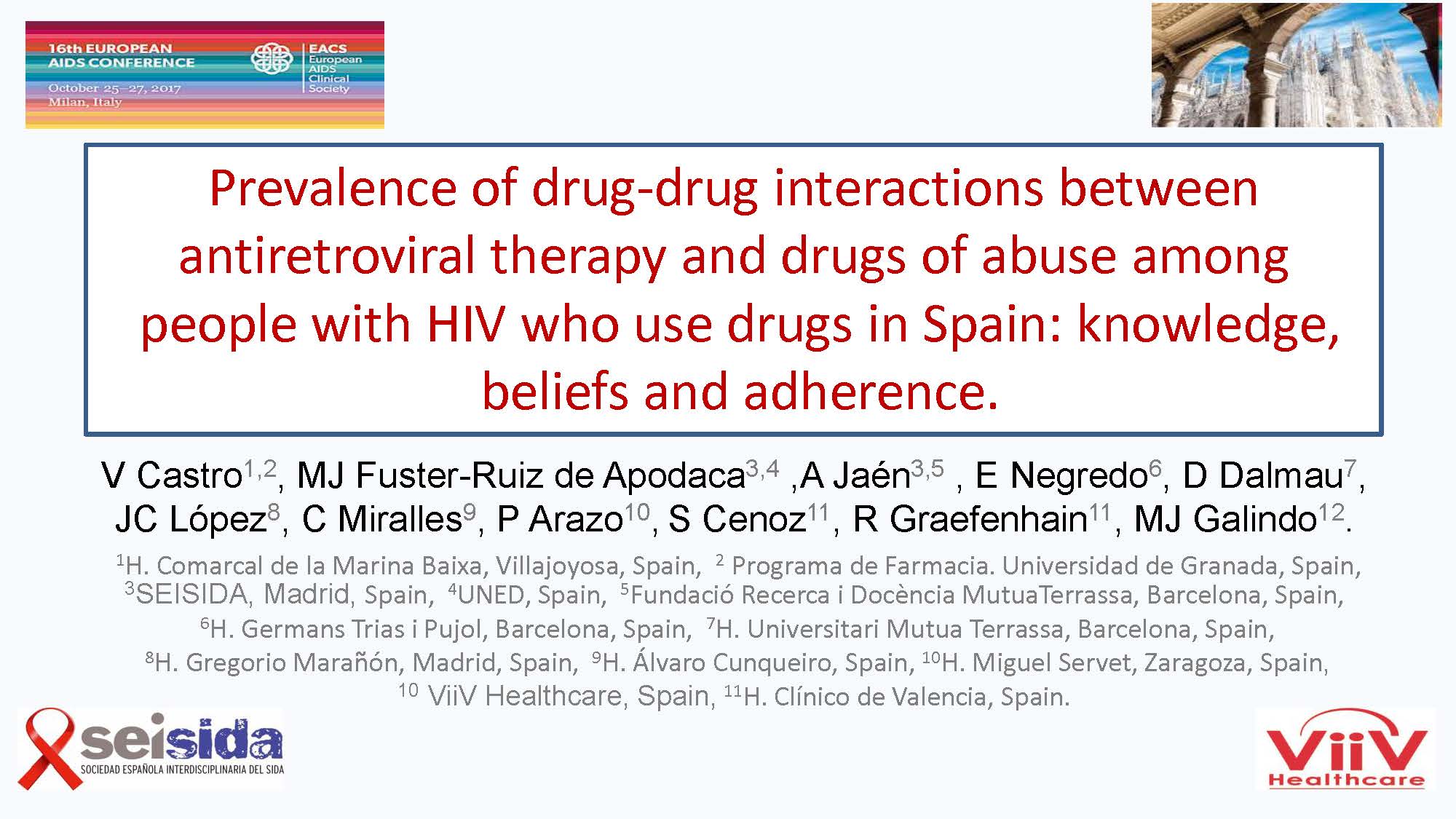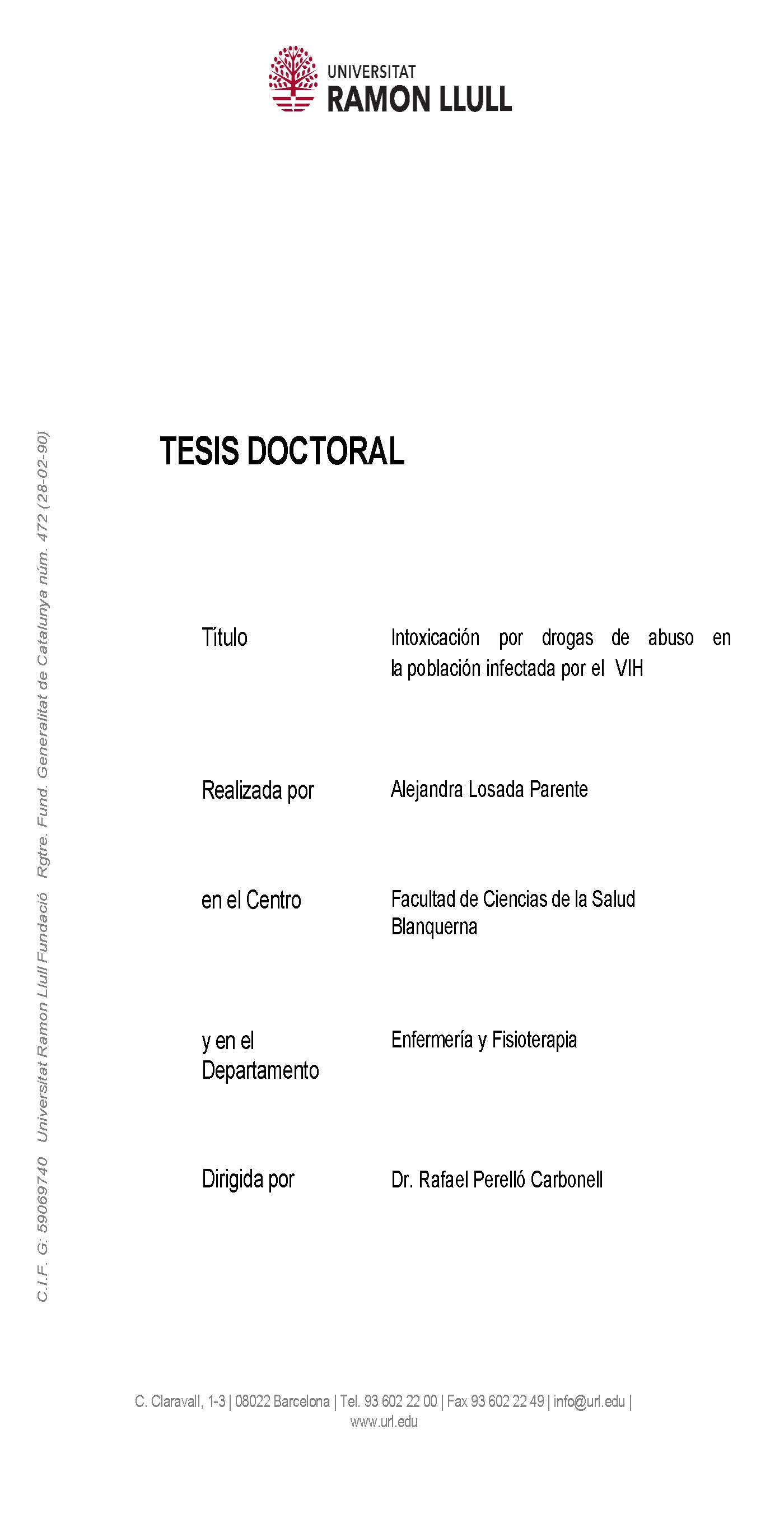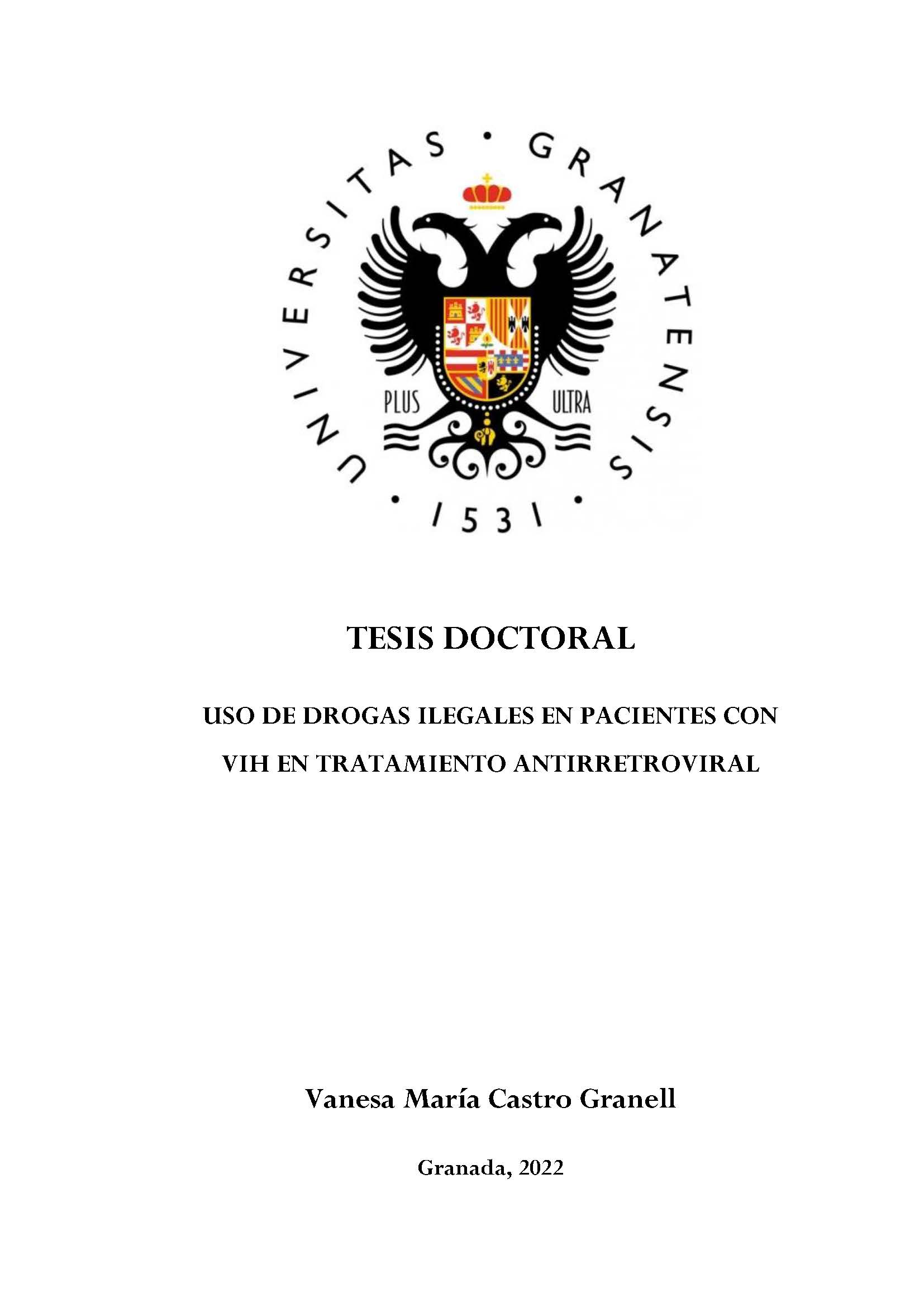Catálogo general VIH

Prevalence of drug-drug interactions between antiretroviral therapy and drugs of abuse among people with HIV who use drugs in Spain: knowledge, beliefs and adherence
Resumen
Objectives: To analyse the prevalence of drug-drug interactions (DDI) between antiretroviral therapy (ART) and drugs among people with HIV (PHIV) and their impact on quality of life (QoL). We also explored their knowledge, beliefs and its impact on treatment adherence. Methods: 1376 PHIV participated in a cross-sectional survey conducted throughout 33 Spanish centers. An on-line survey was designed that measured: demographics; health data; drug use; knowledge, beliefs and behaviours about DDI; treatment adherence, QoL. Analysis was performed considering those persons who used drugs. Results: From the total sample 685 participants used drugs (49.8%) and 86.1% were men. Moderate DDI (53.1%) requiring some intervention were identified in 53.1% (M=1.6±2.7). Only one participant experienced a severe DDI. Homosexual men (57.5%) showed higher DDI mean than heterosexuals (7.2±7.3 vs 3.5±3.8, p< .0001). There were not interactions negatively correlated neither with any domain of QoL, CD4 cell count nor undetectable HIV viral load. Among the participants, 40.4% stated to have knowledge about DDI and 40.1% stated interactive toxicity beliefs about it, making schedule adjustments in ART to avoid interactions in 41.9% of cases. In 8.3% of cases, patients intentionally missed their ART when planning to use drugs and there were 13% missing doses under the effect of drugs. Use of marginal drugs were related to have less knowledge about DDI (p=.012) and less interactive toxicity beliefs (p< .0001). These beliefs correlated positively with intentional nonadherence behaviours (p< .0001). Only 44.4% stated to have received information about DDI from their physicians. DDI knowledge correlated positively with total score of ART adherence (p< .0001), having a strong association with QoL's domains (p< .0001). Conclusion: Several PHIV who use drugs experience DDI that require monitoring. Adequate information about interactions and clues about how to manage ART when they are using drugs could improve ART adherence and QoL.
Autoría:
CASTRO GRANELL, Vanessa; FUSTER RUIZ DE APODACA, María José; JAEN, Àngels; NEGREDO PUIGMAL, Eugenia; DALMAU JUANOLA, David; LÓPEZ BERNALDO DE QUIRÓS, Juan Carlos; MIRALLES ÁLVAREZ, Celia; ARAZO GARCÉS, Piedad; CENOZ GOMIS, Santiago; GRAEFENHAIN, R.; GALINDO PUERTO, María José
Autoría institucional: SEISIDA (Sociedad Española Interdisciplinaria del Sida) (España)
Autoría institucional: SEISIDA (Sociedad Española Interdisciplinaria del Sida) (España)
Ficha bibliográfica
- Año de publicación:
- [2017]
- Descripción física:
- [9] p.
- Formato:
- Folleto
- Notas:
- Trabajo presentado en la 16th European AIDS Conference celebrada en Milán (Italia) del 25 al 27 de octubre de 2017.
- Más información:
-





